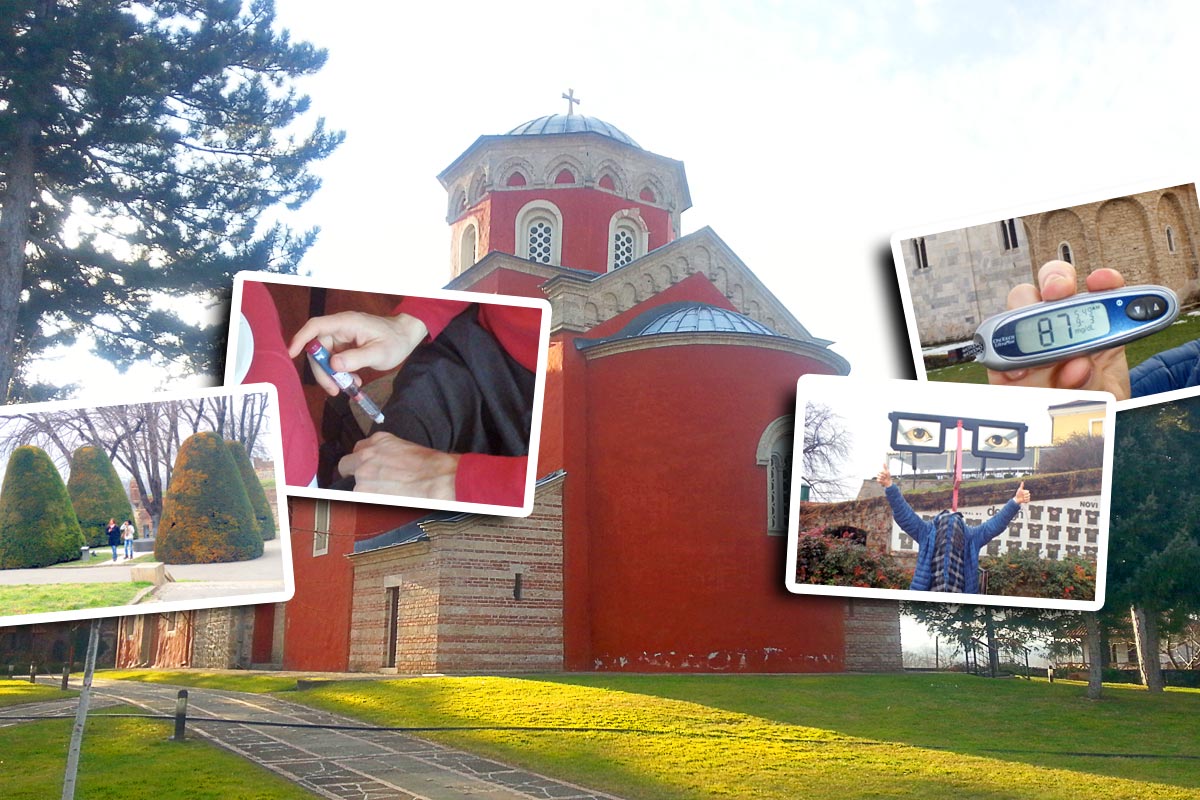
Serbia is a land of complicated history and thrilling beauty which any diabetic can visit without problems. As long as you understand what supplies and amenities you’ll be able to find there, and adopt a helpful, positive attitude, diabetes can’t stop you from traveling to this richly absorbing Balkan country.
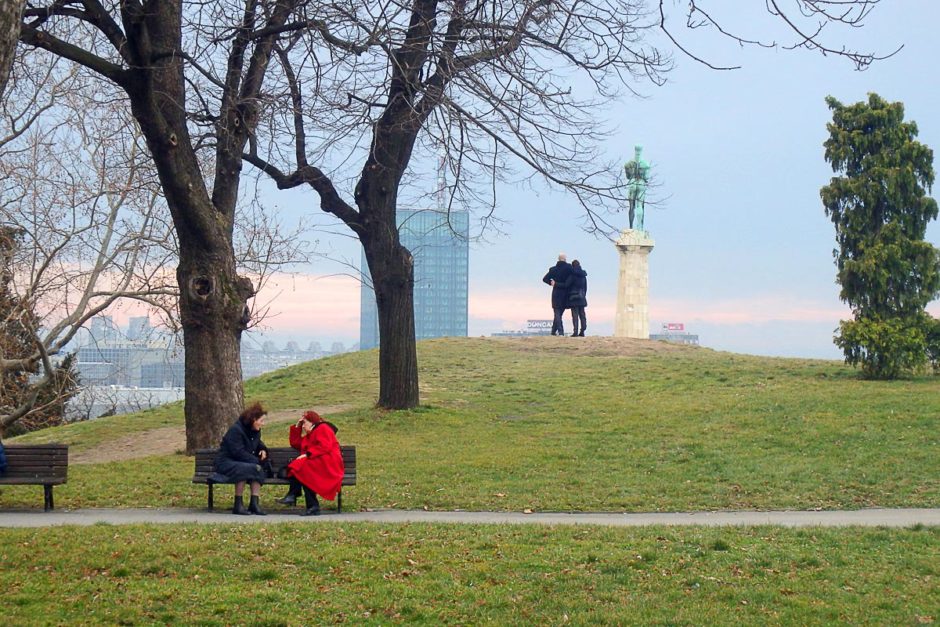
In this guide to diabetes travel to Serbia
This is your guide to all things diabetes in Serbia. Included is real information about food, insulin, blood sugars, transportation, and facilities in Serbia.
This information is based on real facts on the ground and will help you get the most out of your Serbian visit without giving in to fear. Read on for:
- Tips on taking insulin for the food you’ll eat in Serbia.
- How to speak with Serbians about being diabetic
- How to handle bad blood sugars while traveling in Serbia
- Info from a real Type 1 diabetic’s experiences traveling in Serbia
- Inspiration for traveling safely and confidently to Serbia with diabetes
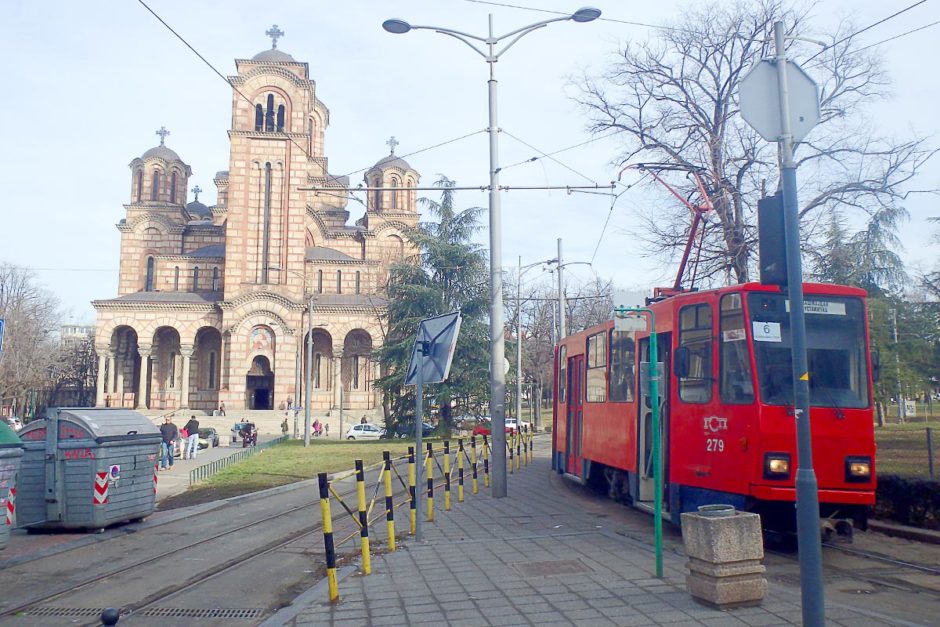
Diabetes in Serbia
First, the basics to traveling Serbia with diabetes.
Serbia is a modern country, with supermarkets, police, hospitals, and good infrastructure all around. Being diabetes in Serbia presents no special problem, since anything you might need will be as easy to find as it is anywhere.
For example, pharmacies are easy to find even in smaller towns. They will have, or be able to get, a selection of insulin, test strips, and other diabetes supplies. Also, food and low blood sugar snacks are simple to find.
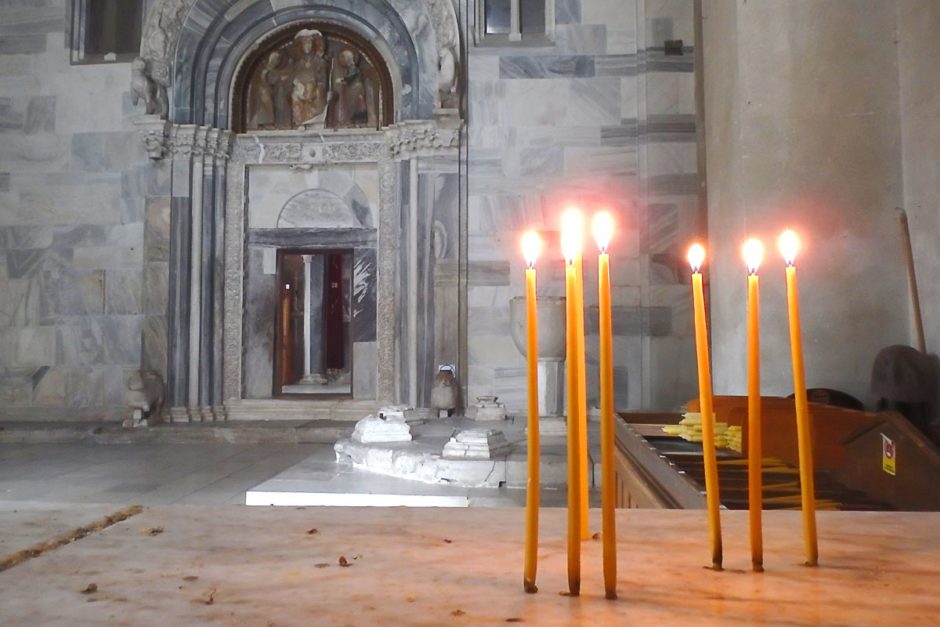
However, stocking up on such supplies should be carefully considered and prepared for.
Take the supplies you’ll need
The simple formula for traveling to Serbia with diabetes (or anywhere) is to calculate how much insulin, BG test strips, and any other supplies you’ll need for your trip, then take double that amount from home.
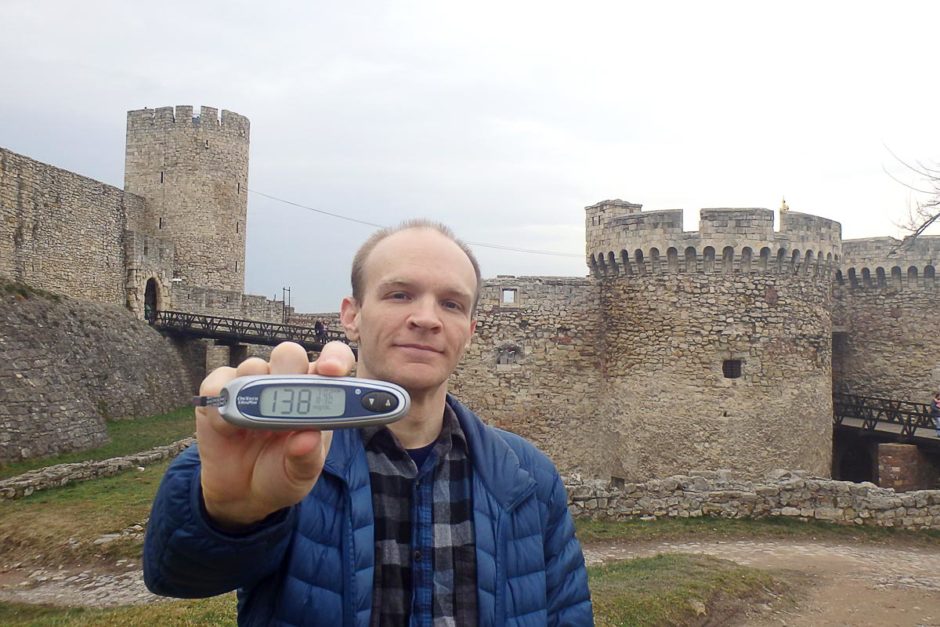
Split everything up into two groups: carry half of it with you in a day bag, and leave half of it back in your room in your big suitcase. It’s extremely unlikely that anything would happen to either supply, but just in case it does you’ll have more waiting for you. (The practicality of this system helps assuage any “supplies” fears you might have, which is something that keeps many diabetics from following their travel dreams.)
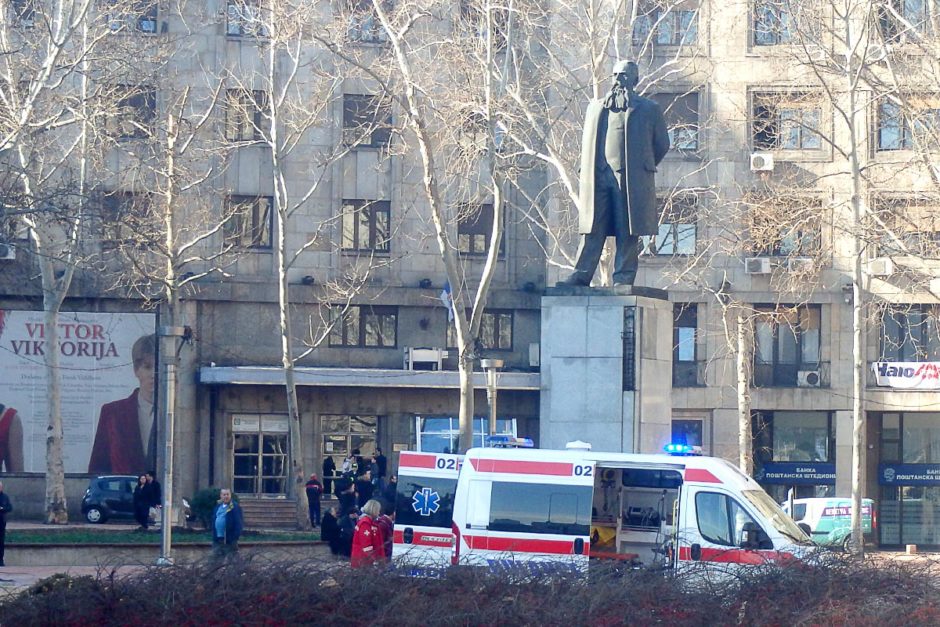
Low blood sugar snacks
You should stock up on low blood sugar food whenever you can. Kiosks, convenience stores, supermarkets, and even vending machines are commonly found in many places but not in some remote historical sites, and not on trains and buses.
Pick your favorite type of juice and/or cookies – whatever you like to carry with you – when you see it and make sure you have more than you’ll need for the next bit of time. You can also use the “split” system, keeping some with you (always) and some back in your big bag.
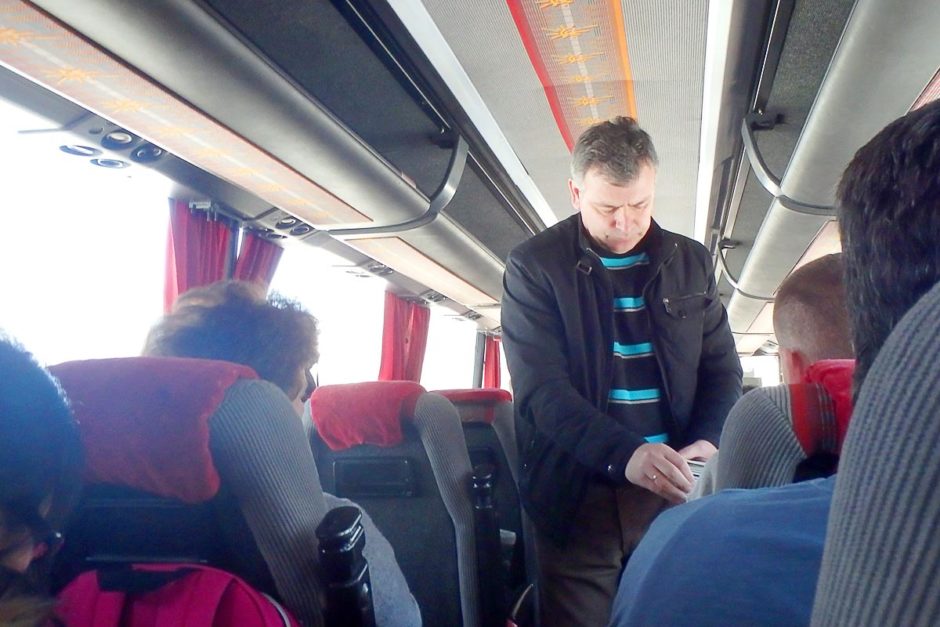
Passport control on the Bosnia-Serbia border.
But the point is, if you’re going to be on a bus or a train, or going to some tourist site away from town, take plenty of low blood sugar snack with you. You never know when you’ll be stuck without any vendors for a day or two.
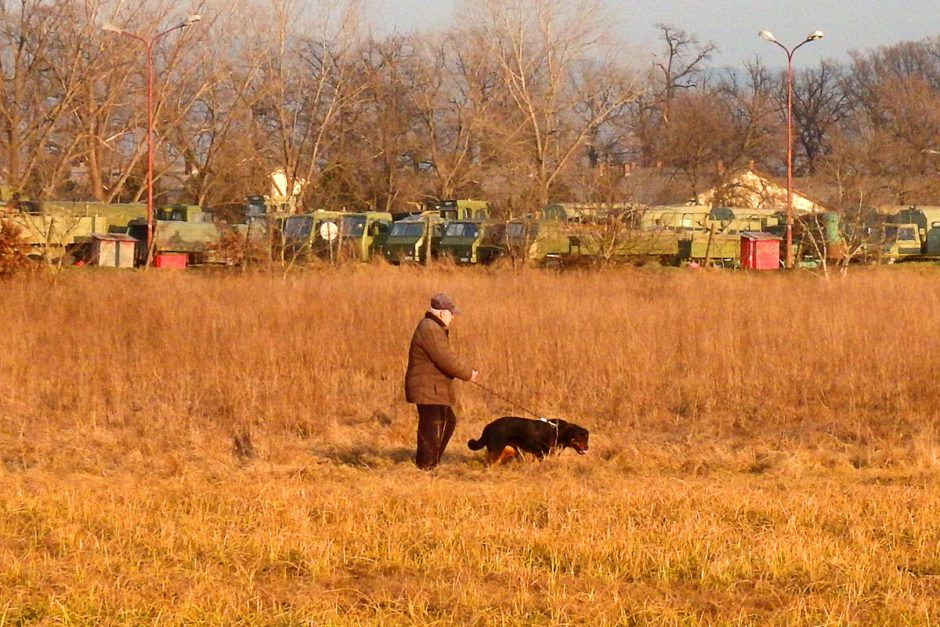
How to speak Serbian – for T1Ds
In the Serbian language, “diabetes mellitus” is rendered as шећерна болест, or šećerna bolest pronounced “sheh chair na ballest”. However, you don’t really have to worry about this because the English word “diabetes” – дијабетес or dijabetes– is at least as useful. (Especially if you pronounce it “dee a beh tess”.) Type 1 is тип 1 or tip 1, pronounced “teep yeah don”.
So, practically speaking, just say “dee a BEH tess” if you need to tell someone that you’re diabetic – or show them an insulin pen and/or blood sugar monitor. They’ll get it, especially a pharmacist or doctor or nurse.
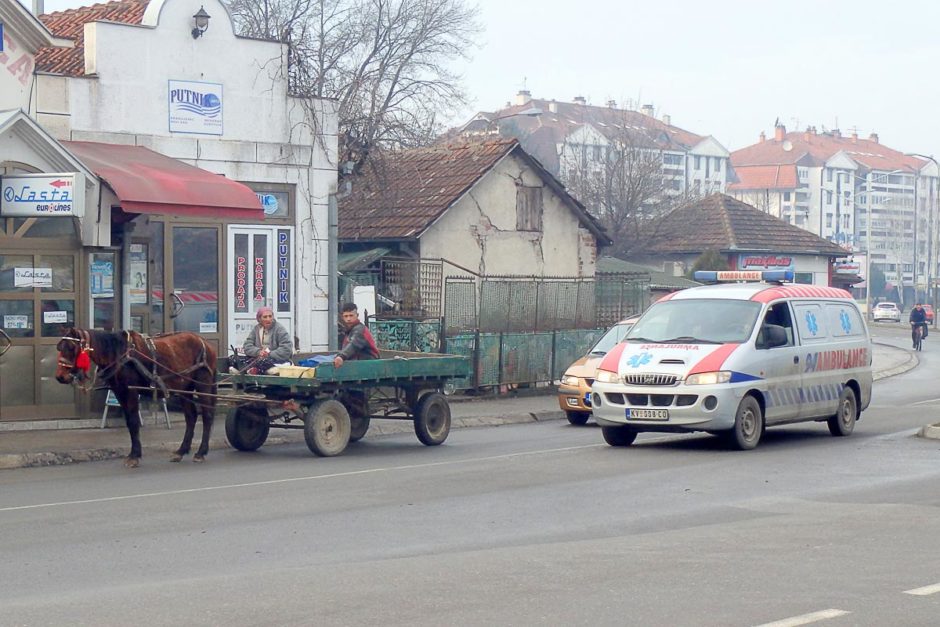
But really, it is very, very unlikely that this will be necessary. If you check your BG often, and take care with your insulin and food, it is virtually completely unnecessary to worry about any medical emergency in Serbia. This is where attitude comes in – to make your trip to Serbia as smooth, medically and psychologically, as possible, remember this:
Nothing bad will happen to you in Serbia.
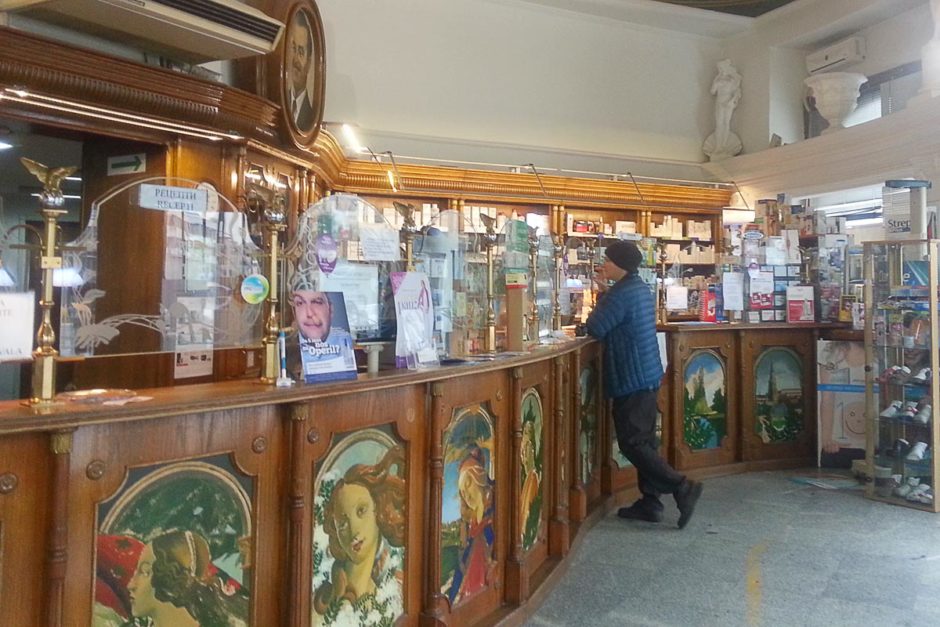
Looking for test strips at a pharmacy in Novi Sad.
Now, I do recommend that you wear some piece of jewelry that identifies you as a diabetic. A necklace, bracelet, anklet, or even a card in your pocket that says “DIABETES” or “DM” or “T1D” should be more than enough to alert people to your condition, and (even more importantly) ease your mind.
Nothing bad will happen to you in Serbia.
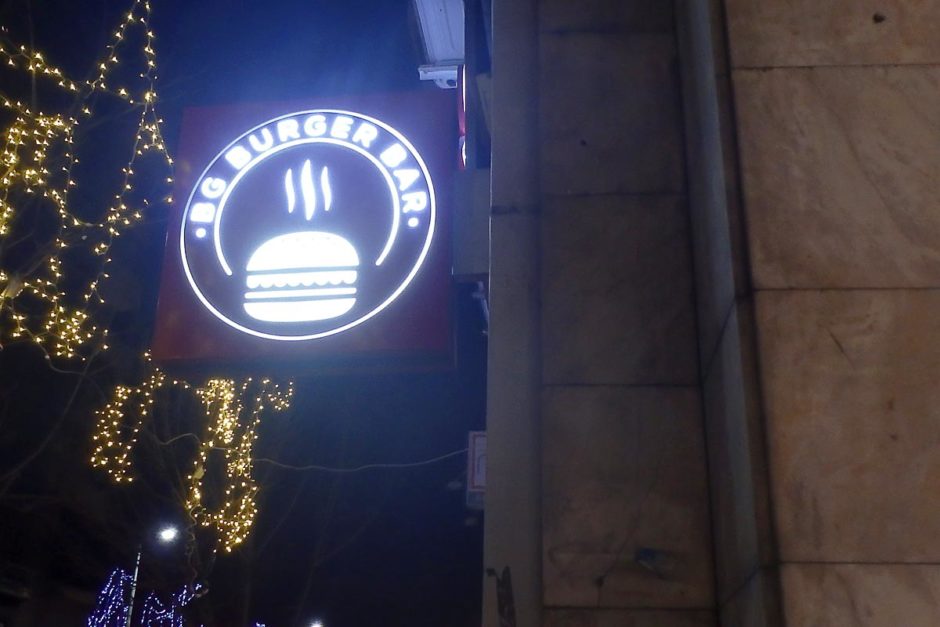
Blood glucose burgers…?
Food and insulin in Serbia
The food you eat in Serbia will probably come from a wide range of things. There is Serbian food, international food, and snacks from small vendors. You may weaken and go for some fast food hamburgers or pizza. You might choose accommodation which includes a vast breakfast buffet.
Traveling cuisine isn’t all about “local, ethnic” food; that’s part of it but travelers usually experience more than that. Diabetic travelers will probably have to deal with things like this:
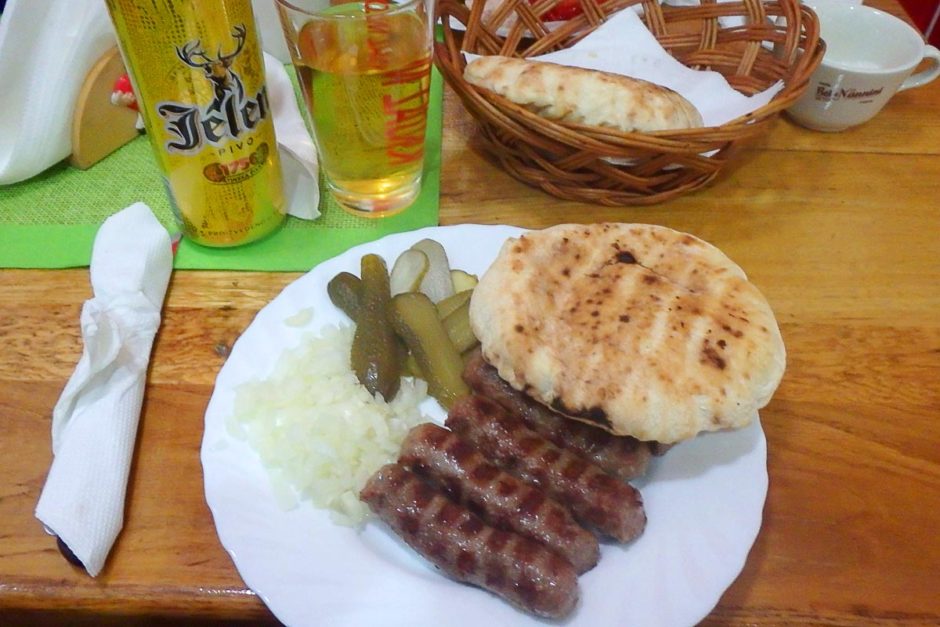
Ćevapčići with bread and beer. Excellent and not too hard to handle with insulin.
- Serbian food – Common dishes include meat, bread, and potatoes. Ćevapčići (Ћевапчићи) is a kind of small sausage often served with a pocket of bread which is very cheap and very delicious, especially with a beer. Other Serbian meals may include seafood. Remember that potatoes – and even some breads – can be pretty thick in carbs, as can any sauces or soups. Make your best guess with your insulin keeping this in mind, but check later to see how you did.
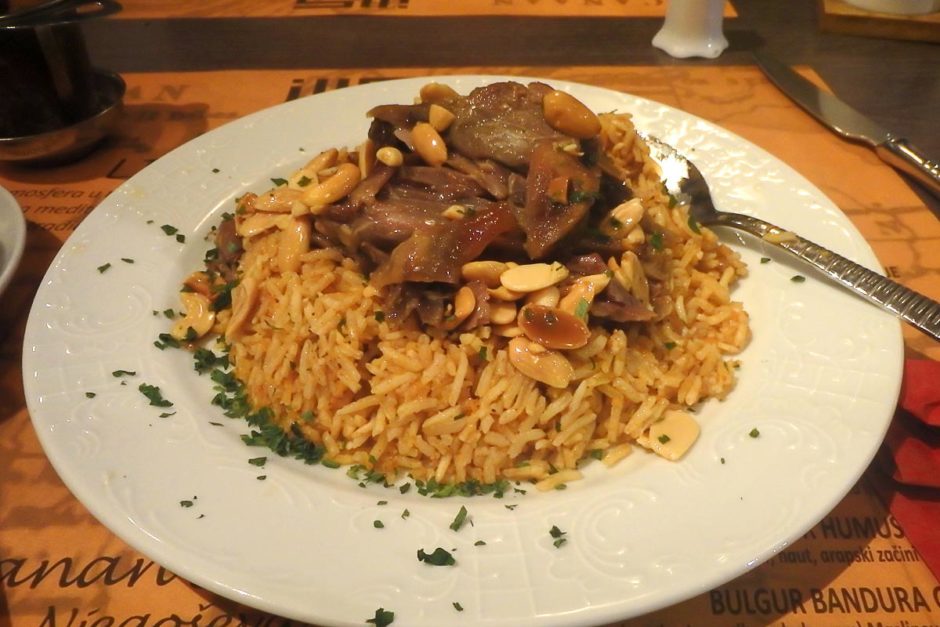
Lebanese food in Belgrade.
- International food – In larger towns like Belgrade you’ll find the usual collection of international restaurants. If you’re not a purist, these can be excellent ways to try some exotic food and break up any culinary monotony you may have accidentally fallen into. Restaurants tend to use ingredients that are fairly high in carbs – watch that rice or sauce, as usual. Check your BG soon after your meal!
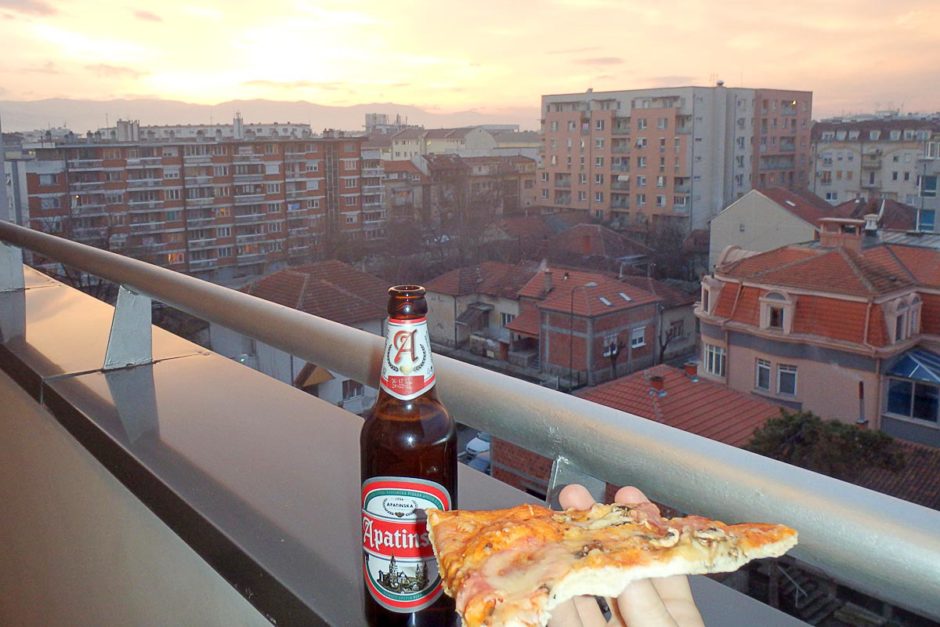
- Pizza and burgers – If you’re in Serbia for any length of time, and having to find your own meals, you may get tired of looking and just opt for something simple from time to time. Hey, no problem – just note that pizza may not come in thin crust and will thus require a lot of insulin, and of course fast food hamburgers and fries will do the same. You may consider experimenting with your shots – for example, split your calculated dose up into two injections, one before and one during or after the meal. Always test your blood glucose levels afterwards, two or three times if necessary.
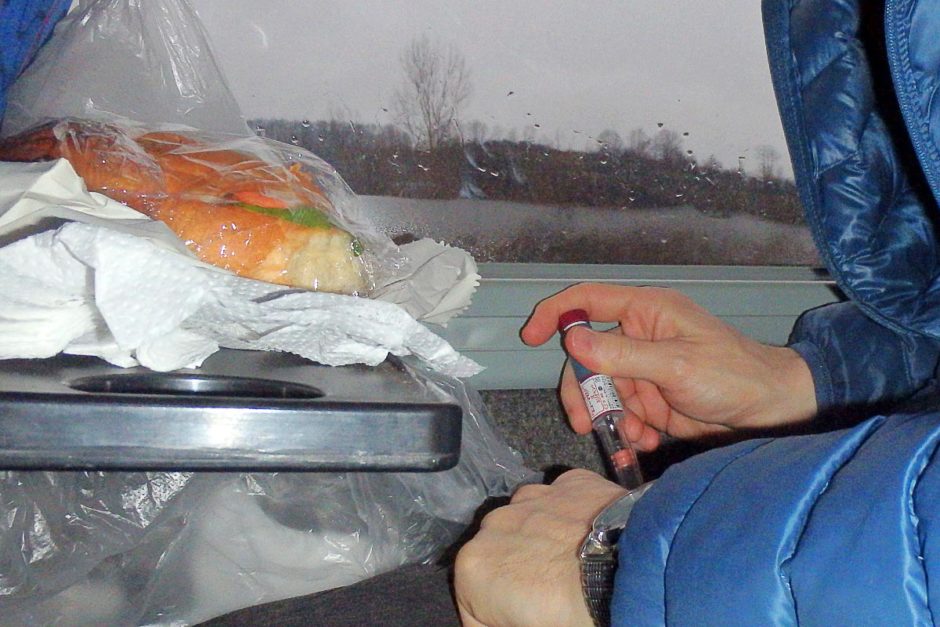
- Train and bus station snacks – Services will likely be unavailable on board any long public transportation journey, so you’ll need to buy lunch or whatever you need before leaving. The usual array of sandwiches and chips can be found in or near most train and bus stations, and you can sometimes top it off with yogurt, fruit, milk, et cetera. Whatever you choose, make sure you choose something and don’t get stuck without food. (Of course, at the very least you’ll have your low blood sugar snack on you, so don’t worry. Just try not to skip meals.) Note that sitting all day on a bus or train can make insulin less effective. Consider upping your dose, which might be made more precise if your convenience store food has nutrition info on it.
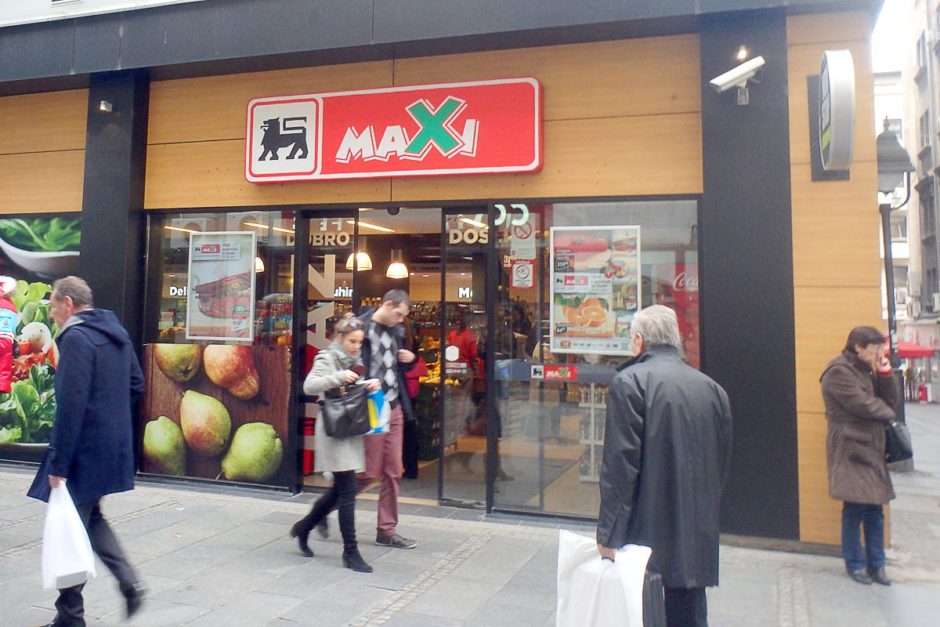
- Supermarkets – If your accommodations include their own kitchen, you can save money and avoid hunting for a restaurant by visiting a nearby grocery store and cooking for yourself. The usual array of food can be found, depending on your tastes and skill at cooking. Another benefit is that the food will often have easy-to-figure-out nutrition info on it.
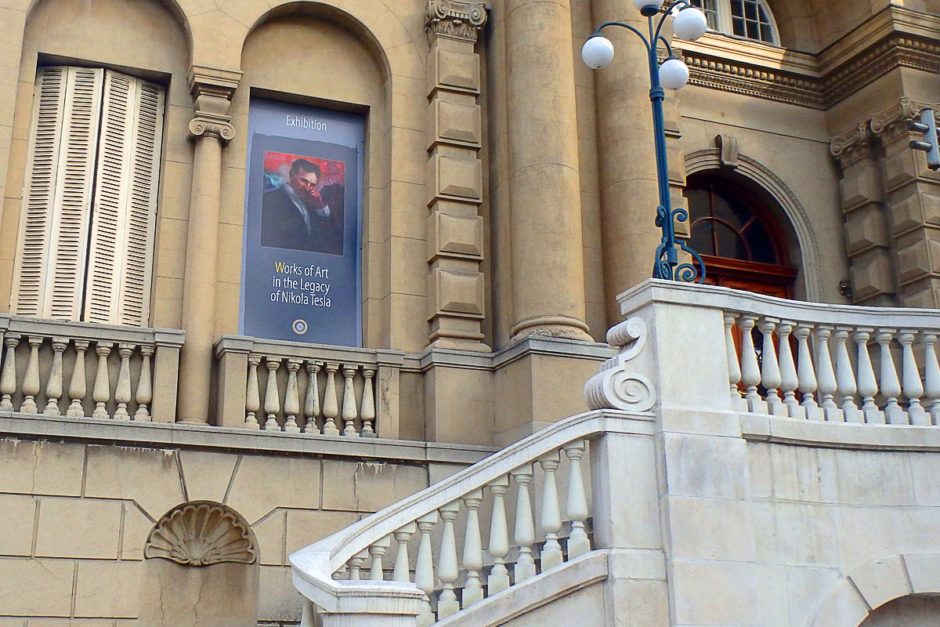
The bottom line is that food in Serbia shouldn’t present any greater obstacle than food back home. But you will likely be eating new, unknown foods, and you are likely to have some bad BG episodes. That’s just how it goes, but try to remember this piece of advice:
Don’t let diabetes dictate where you go and what you eat.
Work with diabetes, not for it. Try whatever you want, guess your dose, and see how you did a little later. Adjust for the next time. But don’t be afraid to try!
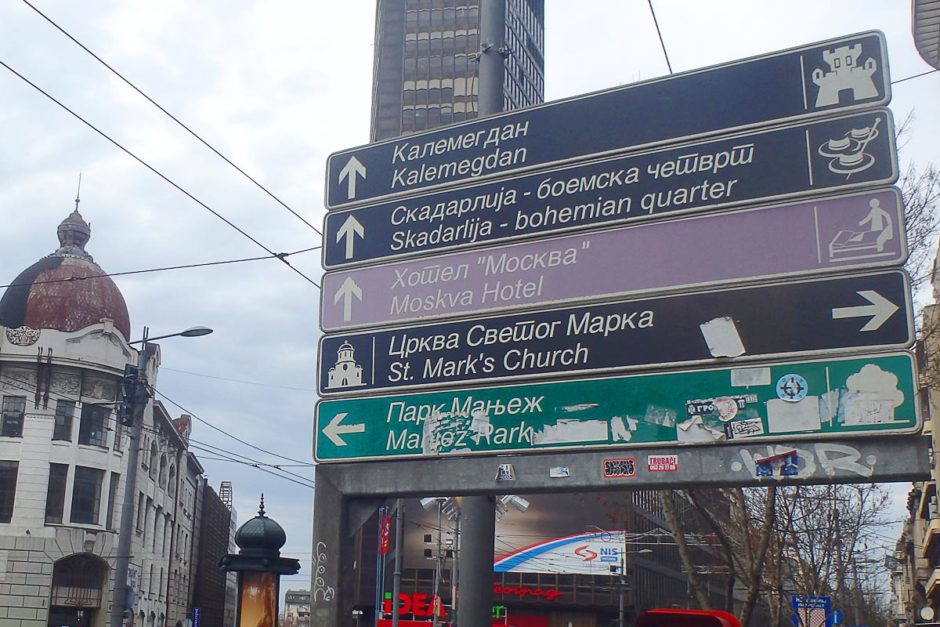
How to take injections in public in Serbia
Inject insulin in public places in Serbia like you would anywhere: just do it.
If you are able to inject at a restaurant table – for example, if you use pens and take injections in your stomach – you can do so anywhere as long as you try to be discreet about it. Same with checking your blood sugar: some people might not want to see it but if you can be careful and try to hide it, go ahead.
Of course you can just go off to the bathroom to do your diabetes stuff there too. But don’t let it worry you either way – just make sure your food is ready when you get back!
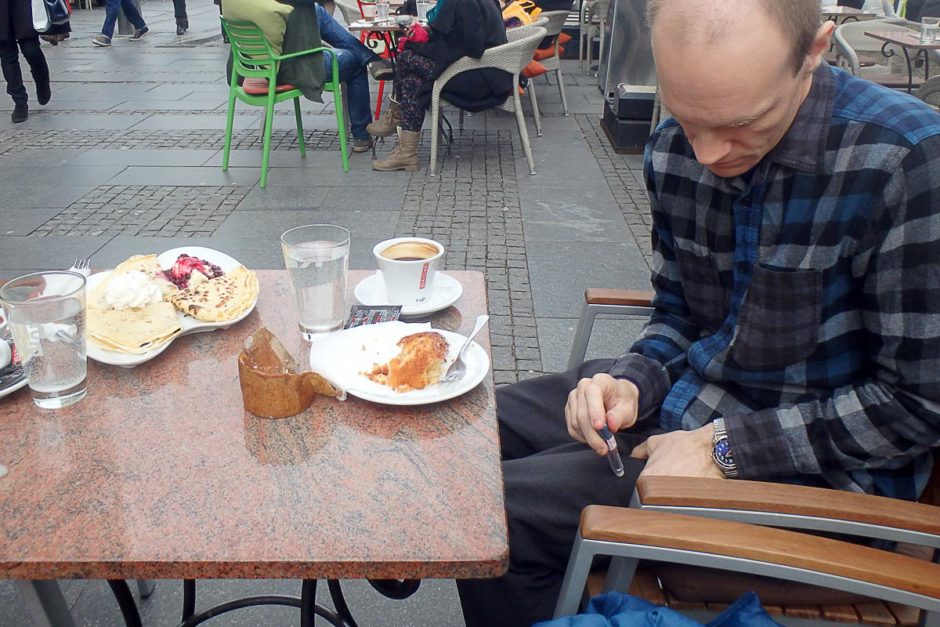
Accommodation in Serbia
Rooms and beds of all types are available in every corner of Serbia. Here is a list of some of the places I personally found as I traveled through Serbia with my partner Masayo. Your experiences way well resemble these.
(Note these aren’t recommendations exactly, just an overview of the real experiences of a real traveler to Serbia. All rooms were found using booking.com.)
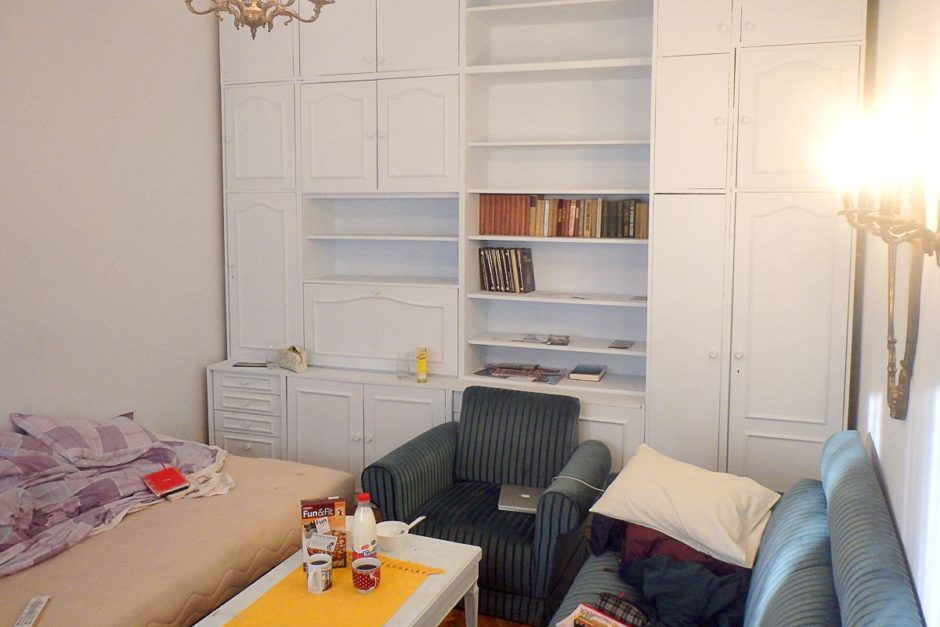
Apartment Mornar I room in Belgrade.
- Apartment Mornar 1, Belgrade – An actual, non-descript residential apartment on a regular little street in Belgrade. Smallish but it had everything we needed, including a full kitchen and a nice single room with a high ceiling. Old but cozy. We needed a phone to call someone to let us in, which we didn’t have, so it took quite a while but it ended well. Affordable, nice location, and cheerful enough.
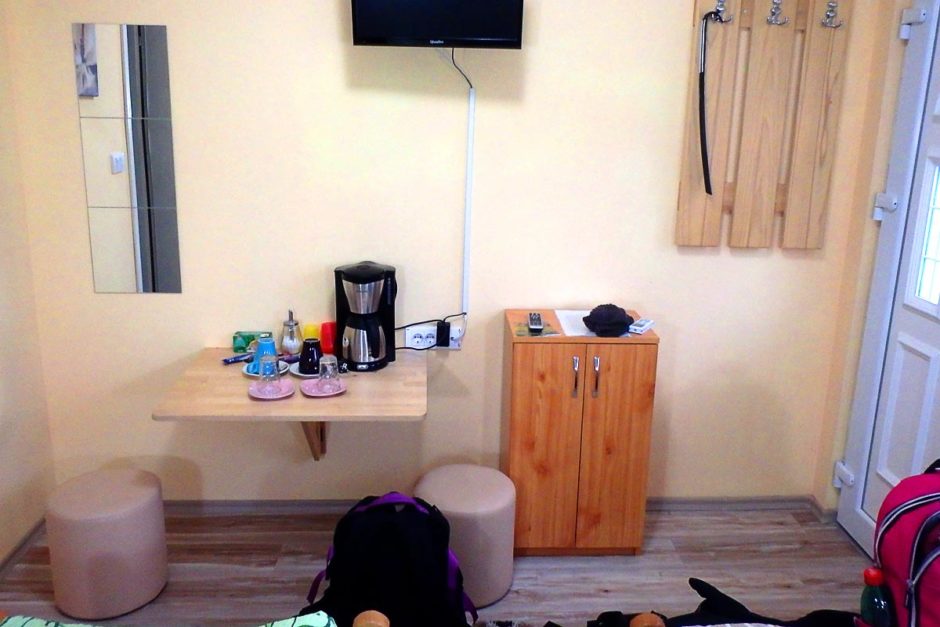
Pleasant little room at Hostel Zlatna Greda.
- Hostel Zlatna Greda, Novi Sad – Security and cleanliness were paramount here. With a complicated double-door system on the street (despite the friendly, peaceful vibe of Novi Sad), the owner here prides himself on having nicely decorated and clean little rooms. Our private room had a shower, bed, refrigerator (which I kept my insulin in) and even a desk and wifi. Not really big enough to hang around in, and there didn’t seem to be any kitchen facilities or common area, but very quiet and peaceful, and right in the middle of town.
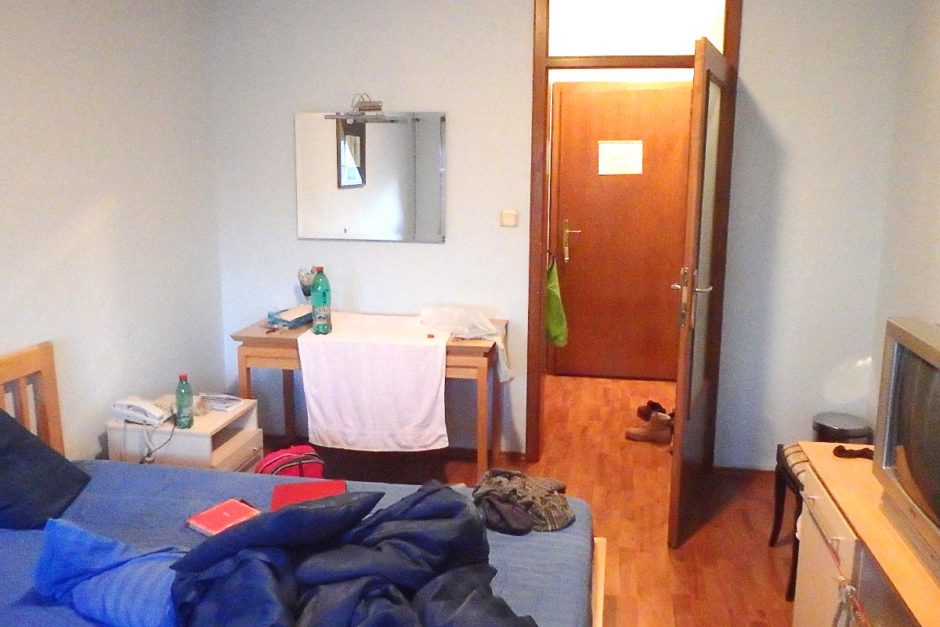
Hotel Belvedere room in Kraljevo.
- Hotel Belvedere, Kraljevo – Small hotel with its own brand new but untrustworthy elevator. Very nice staff, who gave us a free DVD about the town of Kraljevo as a gift when checking out. Nice breakfast buffet, and a clean, quiet, but somewhat claustrophobic feel. Tight security on the door, and in a convenient part of town.
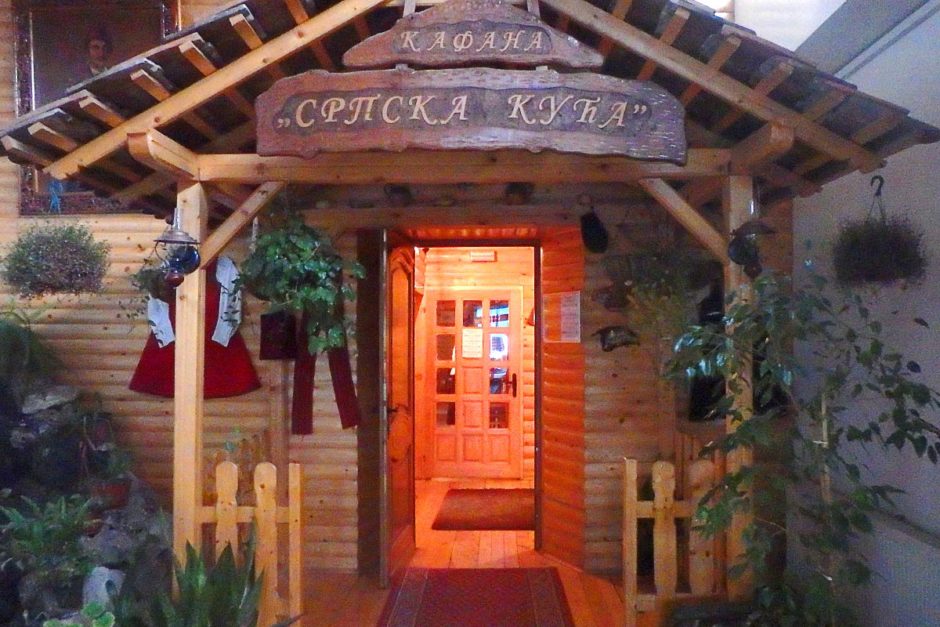
Entrance to the charming restaurant at Srbija Tis Hotel in Zaječar.
- Srbija Tis Hotel, Zaječar – Old Russian hotel with small, dull, usable rooms. Dark, faded hallways gave it what I thought was a nice, unique feel. Truly excellent dining room with tan wood decor everywhere, a giant fire pit in the middle, and cheap and delicious daily meals. Right in the middle of town (which is pretty small anyway).
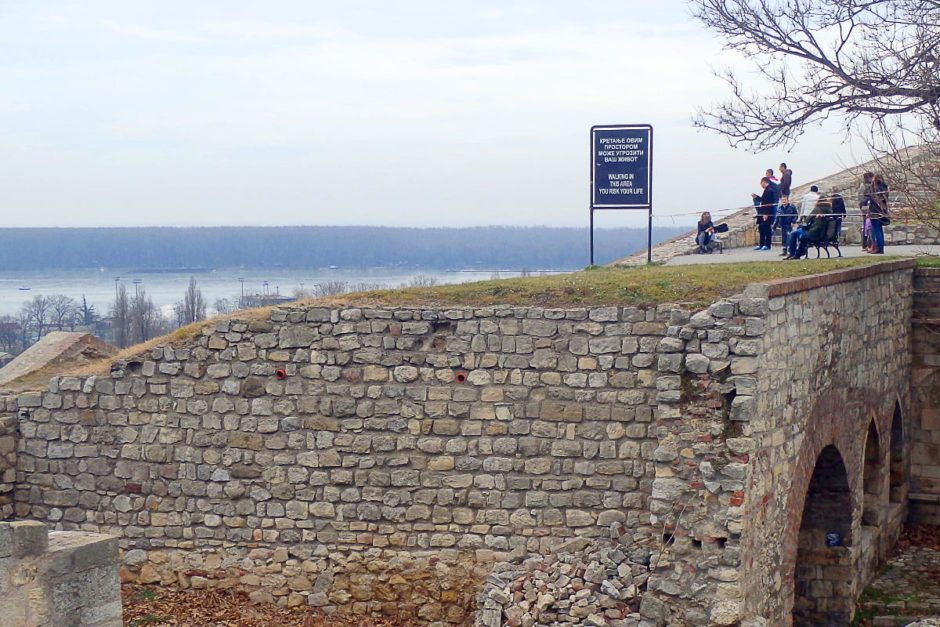
A lot of the accommodation in Serbia has a personal, unsophisticated, special vibe. It’s on a human scale, and the staff is invariably friendly. If you need somewhere to put your insulin, they’ll have a refrigerator somewhere (if not right in your room). They can help with taxis and directions to anywhere you need.
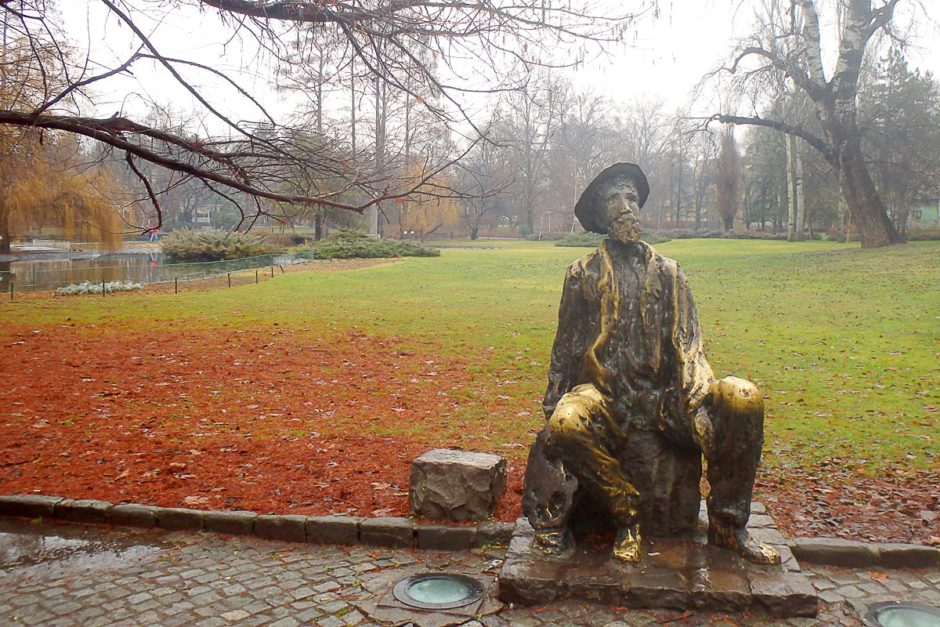
My diabetes experiences in Serbia
I kept track of all my blood sugar readings during my time in Serbia. I also tried to see as much of the country as time would allow, without letting diabetes exert undue influence on my trip.
I went where I wanted and ate what I wanted. My diabetes control was not particularly good, actually, thanks to some bad choices with insulin doses. Food tended to be thicker in carbs than I thought, and I was consistently high. However, I kept checking often, and kept trying to adjust. That’s the goal for any diabetic – not great blood sugars, but always striving for them.
My route in Serbia
By bus Masayo and I entered Serbia from the west and spent a few days in the capital Belgrade, where we visited the Nikola Tesla Museum and the impressive Belgrade Fortress area. Then we took a rickety old train north to the town of Novi Sad in the Vojvodina section of Serbia, including the Petrovaradin Fortress which lay a short walk across the Danube River.
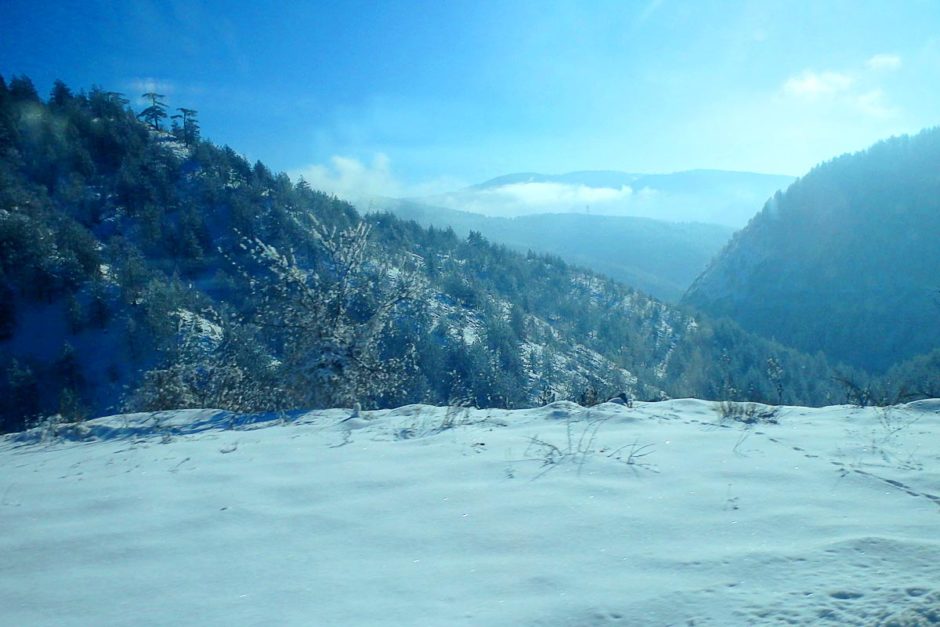
From there we took a bus that kept breaking down back through Belgrade to the town of Kraljevo, where we visited two area monasteries: Studenica (a UNESCO World Heritage Site) and Žiča. Finally we took a bus over frighteningly snowy mountain roads to the small eastern town of Zaječar where we were the only visitors one day to Felix Romuliana, a big UNESCO-inscribed area full of ancient Roman ruins.
After another scary trip through the snow to travel hub Niš, we headed down to Kosovo.
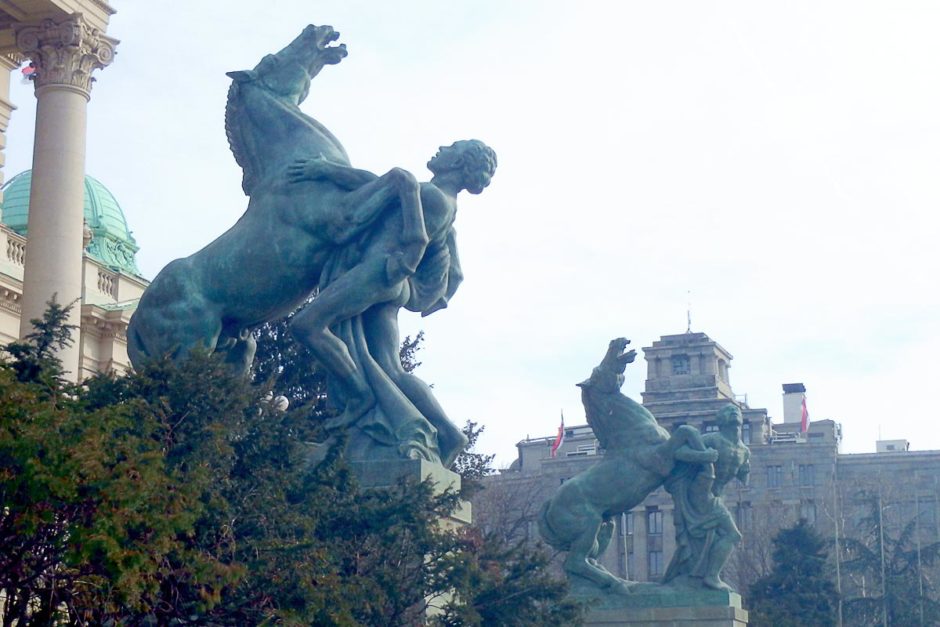
My blood sugar stats in Serbia
As I said, my BG control wasn’t good in my 11 days in Serbia but I always kept trying, even in the face of bad strings of readings.
- Total number of BG checks: 49
- Average BG: 205
- Lowest BG: 55
- Highest BG: 432
- Average morning BGs (~12:00): 207
- Average afternoon BGs (12:00~6:00): 184
- Average evening BGs (6:00~): 240
That one shocking 432 really threw my average off; except for that I only had about 7 readings over 300. Not great of course – zero such readings would have been fine with me – but it certainly could have been worse, and was worse earlier in this same trip. I did have several instances of good readings, even after big rice or pizza meals, and I used those to figure out how to control things better in general as the trip continued.
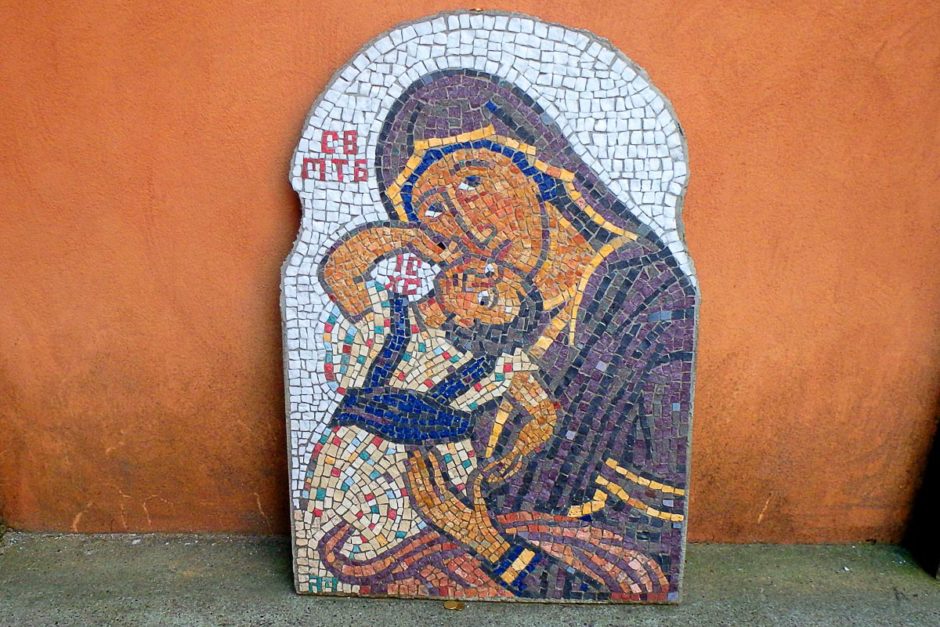
I also attribute several bad BGs to my overblown fear of lows – the influence that has on insulin dose choices, plus the general stress of it, made readings in the 200s rather commonplace. It took time but I overcame it after Serbia.
Your BGs can be much better than mine here, but the main point is not to be overly upset by poor readings. Just keep trying, and endeavor to take the bad ones in stride. Having high BG while traveling in Serbia is better than having high BG while sitting around at home!
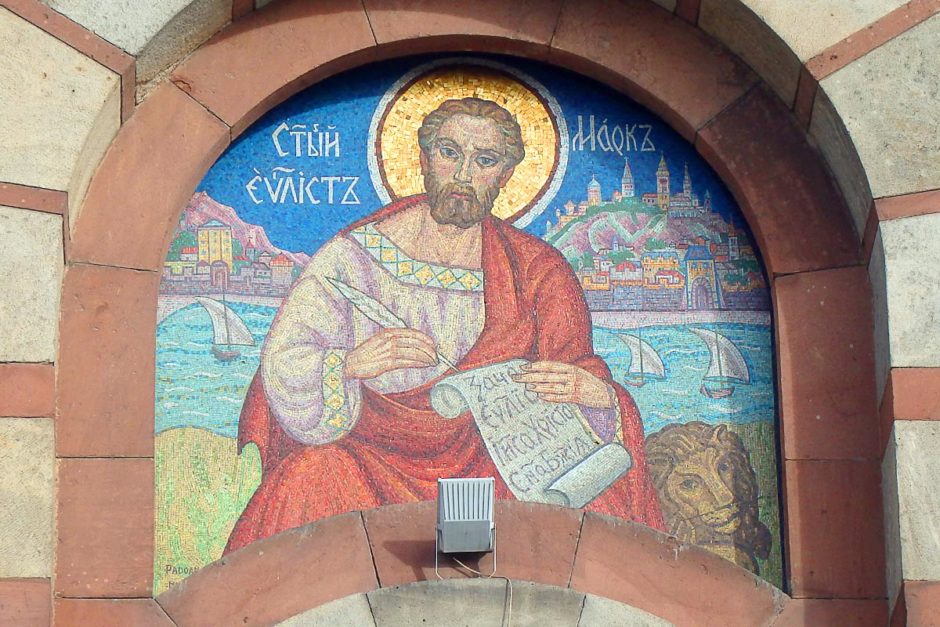
Your trip to Serbia
If you’ve visited Serbia, I’d love to hear about your destinations and experiences there. If you’re diabetic let me know how that went for you too.
If you’re planning to go, or considering going, to Serbia and have any comments or questions please let me know that too. Remember to travel without fear.
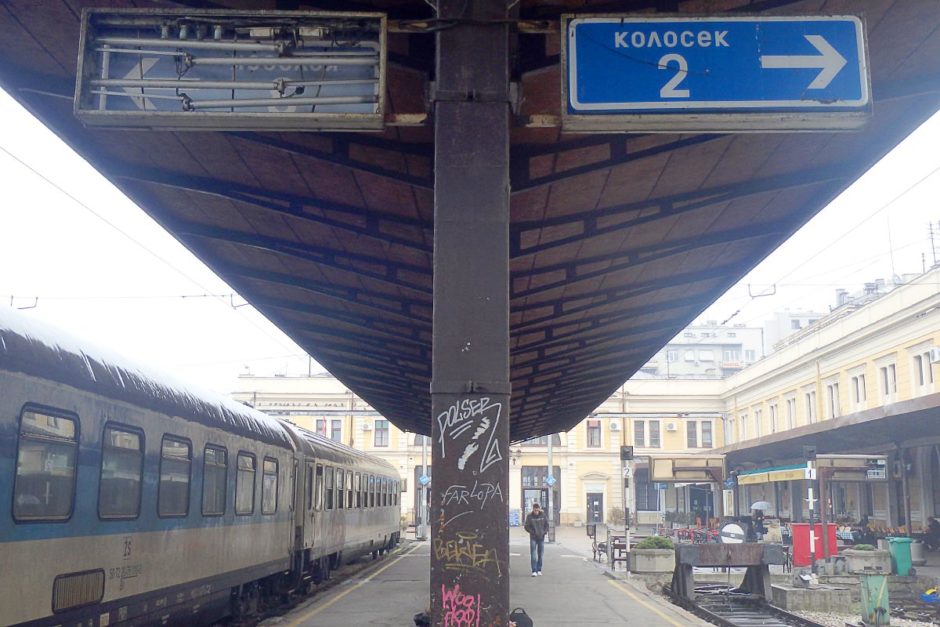
Belgrade’s main train station platform.
You can go anywhere with diabetes!
Read more about my travels in Serbia
Come along on the adventure! Follow detailed travelogues about the wondrous sights, fascinating people, and varied diabetes experiences I encountered as a traveling T1D in Serbia:
Day 92: Bus From Srpska To Serbia's Capital Belgrade
Day 93: How To Kill A Day Off In Belgrade, Serbia
Day 94: Walking Around Belgrade: Fortress And Nikolai Tesla
Day 95: Dilapidated Serbian Train To Novi Sad In Vojvodina
Day 96: Petrovardin Fortress Towering Over Novi Sad In Serbia
Day 97: Ride On A Broken Bus To Kraljevo, Serbia
Day 98: Thrilling Visit To Studenica Monastery In Rural Serbia
Day 99: Žiča Monastery, A Hidden Jewel Of Kraljevo, Serbia
Day 100: A Day Of Icy Roads In A Bus To Zaječar, Serbia
Day 101: No Other Tourists At UNESCO's Felix Romuliana In Serbia
Day 102: Terrifying Bus Ride In The Snow To Pristina, Kosovo
Thanks for reading. Suggested:
- Share:
- Read next: Tips for traveling to Albania with diabetes
- News: Newsletter (posted for free on Patreon every week)
- Support: Patreon (watch extended, ad-free videos and get other perks)

Support independent travel content
You can support my work via Patreon. Get early links to new videos, shout-outs in my videos, and other perks for as little as $1/month.
Your support helps me make more videos and bring you travels from interesting and lesser-known places. Join us! See details, perks, and support tiers at patreon.com/t1dwanderer. Thanks!
